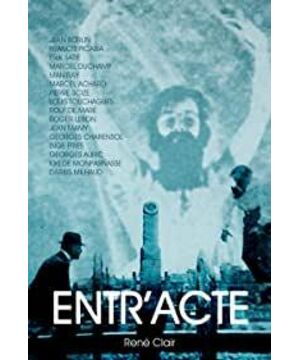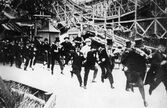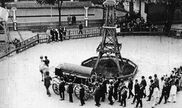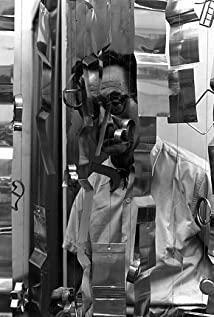The first part of "The Rest Show" combines three or four themes skillfully and rhythmically. It uses a panorama of Paris in a small photo studio set up at the Champs-Élysées in Paris, some columns shaped chimneys and the graceful slow dance of a dancer.
There are brief, entertaining shots of Dadaists, such as Man Ray playing chess with painter Du Xiang, and Picabia and musician Eric Satie carrying a cannon. Then there's the Swedish dance troupe's star Jean Brin hilariously dressed as a Tyrolean hunter on the roof of the theatre. Picaria leads the plot out of the funeral and chase scene after he shoots his character to death.
The funeral service begins with a solemn rhythm in the peculiar setting of the Luna vaudeville. A funeral carriage dragged by a camel, a priest dressed like a bank teller, a wreath like a croissant, all these are the classic details of Dadaism at the time when Tristan Zella and Louis Aragon's play, once appeared. But the gimmicks also come from the pre-war comedy films that Dadaism was influenced by.
The avant-garde approach dominates the first part of The Rest Show, while the approach of the prewar drama emerges in the second part, starting from the mourning row.
In addition to applying formal techniques such as overprinting, morphing, and quick montages, the film moves the plot forward in the conventions of EMI or Mike Seinart's "chasing films." The funeral car drove at ever-increasing speed along the set railway of the Luna Variety, over the Mont Sainte-Claude, and across the coast of Picardy, carrying coffins in nature.
At the end of the film, Jean Brin, dressed like Méliès the magician, uses a magic trick to make the images of his pursuers disappear, and then his own image also disappears from the screen.
View more about Entr'acte reviews








